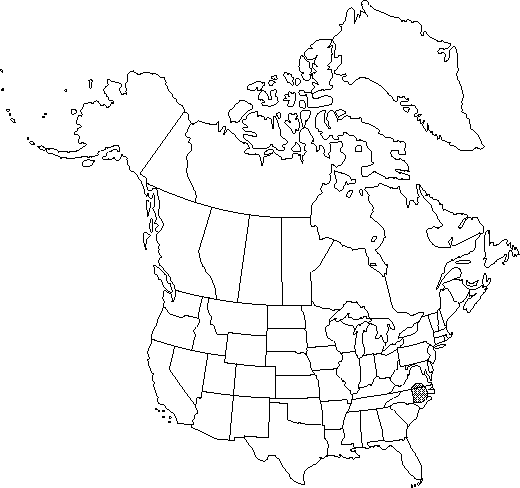Difference between revisions of "Hexastylis lewisii"
Spring Fl. Piedmont, 50. 1940.
FNA>Volume Importer |
FNA>Volume Importer |
||
| Line 33: | Line 33: | ||
|elevation=0-200 m | |elevation=0-200 m | ||
|distribution=N.C.;Va. | |distribution=N.C.;Va. | ||
| − | |discussion=<p>Hexastylis lewisii resembles H. shuttleworthii in its calyx shape, the presence of elongate rhizomes, and the late flowering time.</p> | + | |discussion=<p><i>Hexastylis lewisii</i> resembles <i>H. shuttleworthii</i> in its calyx shape, the presence of elongate rhizomes, and the late flowering time.</p> |
|tables= | |tables= | ||
|references= | |references= | ||
| Line 57: | Line 57: | ||
|publication year=1940 | |publication year=1940 | ||
|special status=Endemic | |special status=Endemic | ||
| − | |source xml=https://jpend@bitbucket.org/aafc-mbb/fna-data-curation.git/src/ | + | |source xml=https://jpend@bitbucket.org/aafc-mbb/fna-data-curation.git/src/8f726806613d60c220dc4493de13607dd3150896/coarse_grained_fna_xml/V3/V3_1020.xml |
|genus=Hexastylis | |genus=Hexastylis | ||
|species=Hexastylis lewisii | |species=Hexastylis lewisii | ||
Revision as of 17:13, 18 September 2019
Rhizomes dimorphic: internodes of flowering rhizomes short, leaves crowded at rhizome apex; internodes of sterile rhizomes often long, leaves scattered along length of rhizome. Leaf blade variegate, triangular-cordate, cordate, or orbiculate-cordate. Flowers: calyx tube cylindric-campanulate to urceolate-campanulate, sometimes with prominent transverse ridge just above middle, 14-20 × 16-22 mm, inner surface longitudinally ridged, without reticulations, lobes spreading, 8-15 × 10-15 mm, adaxially pilose; stamen connective extending beyond pollen sacs; ovary superior; ovules 10 per locule; style notched at apex. 2n = 26.
Phenology: Flowering spring (Apr–May).
Habitat: Upland and lowland (floodplain) forests, sometimes found along shores of Carolina bays
Elevation: 0-200 m
Discussion
Hexastylis lewisii resembles H. shuttleworthii in its calyx shape, the presence of elongate rhizomes, and the late flowering time.
Selected References
None.
